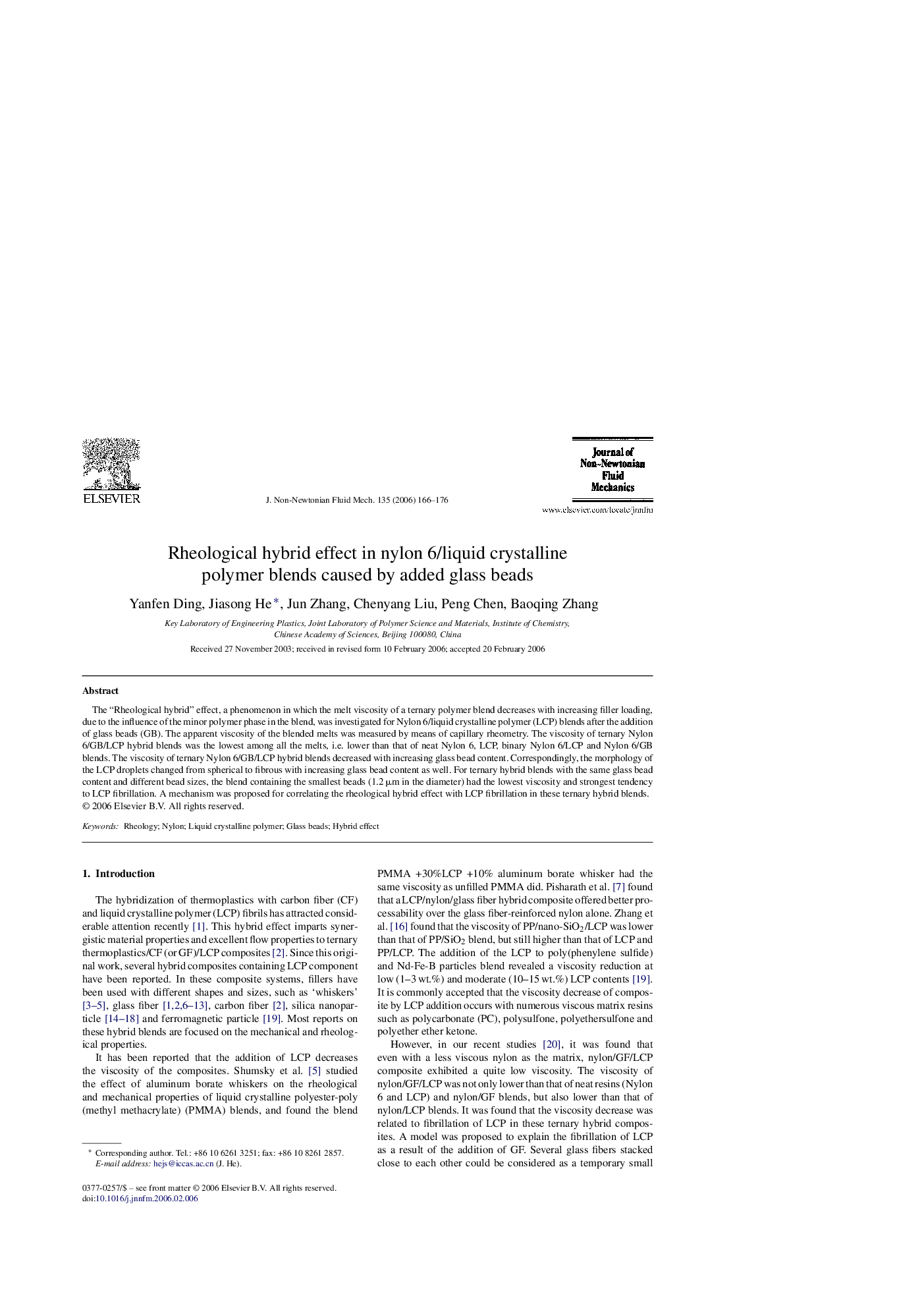| Article ID | Journal | Published Year | Pages | File Type |
|---|---|---|---|---|
| 671495 | Journal of Non-Newtonian Fluid Mechanics | 2006 | 11 Pages |
The “Rheological hybrid” effect, a phenomenon in which the melt viscosity of a ternary polymer blend decreases with increasing filler loading, due to the influence of the minor polymer phase in the blend, was investigated for Nylon 6/liquid crystalline polymer (LCP) blends after the addition of glass beads (GB). The apparent viscosity of the blended melts was measured by means of capillary rheometry. The viscosity of ternary Nylon 6/GB/LCP hybrid blends was the lowest among all the melts, i.e. lower than that of neat Nylon 6, LCP, binary Nylon 6/LCP and Nylon 6/GB blends. The viscosity of ternary Nylon 6/GB/LCP hybrid blends decreased with increasing glass bead content. Correspondingly, the morphology of the LCP droplets changed from spherical to fibrous with increasing glass bead content as well. For ternary hybrid blends with the same glass bead content and different bead sizes, the blend containing the smallest beads (1.2 μm in the diameter) had the lowest viscosity and strongest tendency to LCP fibrillation. A mechanism was proposed for correlating the rheological hybrid effect with LCP fibrillation in these ternary hybrid blends.
